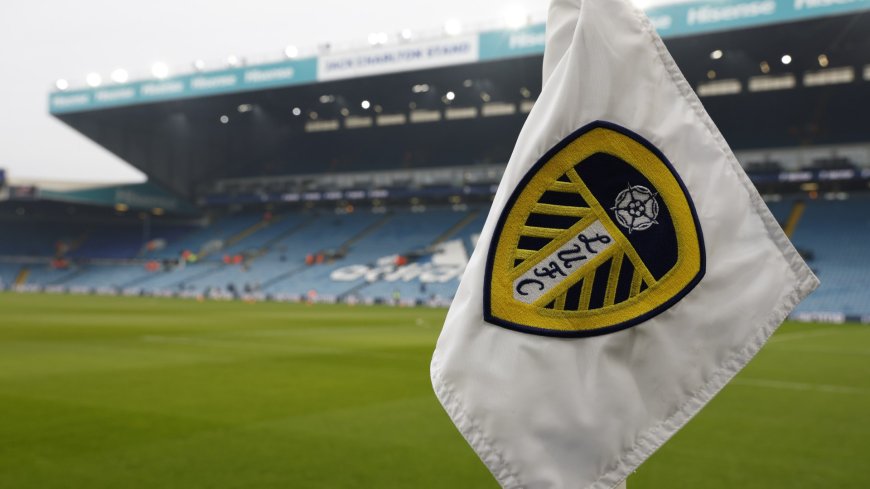Leeds United shelved plans to sell Elland Road for £20m and move to 50,000-seat stadium
Elland Road is one English football’s most iconic stadiums, but 20 years ago Leeds United almost had a brand new place to call home. That’s because back in 2000 the Whites drew up plans for a brand new 50,000 capacity stadium on the outskirts of the city. Plans were in place for Leeds to leave Elland Road during the early noughtiesGetty The plan was for their new home in nearby Skelton to be their home from the 2004/05 season onwards. That new stadium was set to cost £40million with Elland Road expected to be sold to the council for a sum of £20m. Everything was in place – Billy Bremner’s famous statue was set to be moved to the site of the new stadium while two of the access roads were to be named after Christopher Loftus and Kevin Speight – the two Leeds fans who were stabbed to death in Istanbul on the eve of Leeds’s Uefa Cup semi-final against Galatasaray in April 2000. The initial feedback to the proposal was good too with 87 per cent of the supporters who voted on the idea saying that they were in favour of the move. Leeds were among the top clubs in Europe at the time with the 1999/00 season seeing the Whites make it all the way to the semi-finals of the UEFA Cup. They also finished third in the Premier League to see them qualify for the Champions League the next season, but David O’Leary’s side weren’t just there to make up the numbers. Instead Leeds followed that season up with a fourth-place finish in the Premier League and a European run that took them all the way to the semi-finals of the Champions League. Their success was no surprise with a side that boasted the likes of Rio Ferdinand, Lucas Radebe, Harry Kewell and Mark Viduka. But for a side who were firmly among Europe’s elite on the pitch, their infrastructure off it were less-than impressive. O’Leary said: “As it stands we’ve probably got one of the poorest stadiums in the Premiership right now. If we want to compete we have to look to move on.” Leeds have been at Elland Road since 1919 but completed a £40m deal to buy a new stadiumGetty The plan had been for Leeds to move into the new stadium for the start of the 2004/05 season, however the move never came to fruition as chairman Peter Ridsdale resigned from his position in March 2003. It meant that any grand plans for moving stadium were dropped with Leeds racking up large debts and suffering a dramatic fall from grace between 2002 and 2004 as they dropped from the Champions League to the Championship. It also saw the stadium sold off in 2004 during the depths of their financial woe. After failing to earn promotion, Leeds then dropped into League One in 2007 before taking 13 years to eventually get back into the Premier League. While plans for a brand new stadium have never come to fruition, Leeds did unveil plans in September to modernise Elland Road. It comes after July saw them become full owners of the stadium for the first time in 20 years. The plans would see the stadium increase from 37,645 seats to around 53,000 seats to bring an increase to general admission seats in the ground. It would also see the Championship club hold the seventh-largest club stadium in England. With Elland Road named at number two in Adrian Durham’s definitive list of the top English football stadium, fans will be delighted to see the spiritual home of Leeds United remain intact.

Elland Road is one English football’s most iconic stadiums, but 20 years ago Leeds United almost had a brand new place to call home.
That’s because back in 2000 the Whites drew up plans for a brand new 50,000 capacity stadium on the outskirts of the city.

The plan was for their new home in nearby Skelton to be their home from the 2004/05 season onwards.
That new stadium was set to cost £40million with Elland Road expected to be sold to the council for a sum of £20m.
Everything was in place – Billy Bremner’s famous statue was set to be moved to the site of the new stadium while two of the access roads were to be named after Christopher Loftus and Kevin Speight – the two Leeds fans who were stabbed to death in Istanbul on the eve of Leeds’s Uefa Cup semi-final against Galatasaray in April 2000.
The initial feedback to the proposal was good too with 87 per cent of the supporters who voted on the idea saying that they were in favour of the move.
Leeds were among the top clubs in Europe at the time with the 1999/00 season seeing the Whites make it all the way to the semi-finals of the UEFA Cup.
They also finished third in the Premier League to see them qualify for the Champions League the next season, but David O’Leary’s side weren’t just there to make up the numbers.
Instead Leeds followed that season up with a fourth-place finish in the Premier League and a European run that took them all the way to the semi-finals of the Champions League.
Their success was no surprise with a side that boasted the likes of Rio Ferdinand, Lucas Radebe, Harry Kewell and Mark Viduka.
But for a side who were firmly among Europe’s elite on the pitch, their infrastructure off it were less-than impressive.
O’Leary said: “As it stands we’ve probably got one of the poorest stadiums in the Premiership right now. If we want to compete we have to look to move on.”

The plan had been for Leeds to move into the new stadium for the start of the 2004/05 season, however the move never came to fruition as chairman Peter Ridsdale resigned from his position in March 2003.
It meant that any grand plans for moving stadium were dropped with Leeds racking up large debts and suffering a dramatic fall from grace between 2002 and 2004 as they dropped from the Champions League to the Championship.
It also saw the stadium sold off in 2004 during the depths of their financial woe.
After failing to earn promotion, Leeds then dropped into League One in 2007 before taking 13 years to eventually get back into the Premier League.
While plans for a brand new stadium have never come to fruition, Leeds did unveil plans in September to modernise Elland Road.
It comes after July saw them become full owners of the stadium for the first time in 20 years.
The plans would see the stadium increase from 37,645 seats to around 53,000 seats to bring an increase to general admission seats in the ground.
It would also see the Championship club hold the seventh-largest club stadium in England.
With Elland Road named at number two in Adrian Durham’s definitive list of the top English football stadium, fans will be delighted to see the spiritual home of Leeds United remain intact.












































